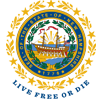Pollutant Tracking and Accounting Project (PTAP)
PTAP allows communities and other organizations to track nutrient reductions associated with both structural and non-structural best management practices (BMPs) while also allowing direct integration of nutrient reduction data into EPA's BMP Accounting and Tracking Tool (BATT).
The Pollutant Tracking and Accounting Project, or better known as PTAP, was created by NHDES and UNH to allow a consistent way for communities and other organizations within EPA Region 1 to track their nutrient reductions from both structural and non-structural BMPs. PTAP is funded by the Municipal Alliance for Adaptive Management and is available for all communities to use, including those authorized under both the NH MS4 Permit and Great Bay Total Nitrogen General Permit.
NH MS4 permittees can use PTAP to track nutrient reductions from implemented structural and non-structural BMPs. Under the NH MS4 Permit, permittees that have phosphorus TMDLs, nitrogen impairments or phosphorus impairments are required to track their BMP nutrient reductions; PTAP enables them to fulfill this requirement. Please note that NH MS4 permittees are not required to use PTAP to track their nutrient reductions, they can track these metrics using any program/system they choose.
PTAP Database
The PTAP Database can be found on UNH’s website. Please contact Tom Swenson at Thomas.D.Swenson@des.nh.gov with any PTAP related questions, including problems with logging into the PTAP Database.
Instructions on how to use PTAP:
PTAP Resources:
PTAP Training Recordings:
- PTAP Workshop Series: Introduction to PTAP and Structural Controls - June 27, 2024
- PTAP Workshop Series: Non-Structural Controls - July 17, 2024
- PTAP Workshop Series: Non-Structural Controls - July 17, 2024 Presentation
- MAAM Non-Structural BMP Training



